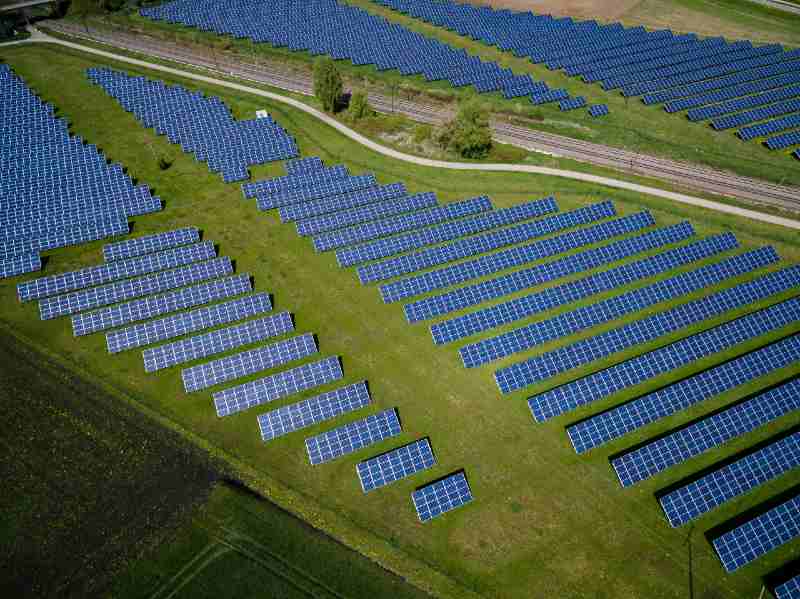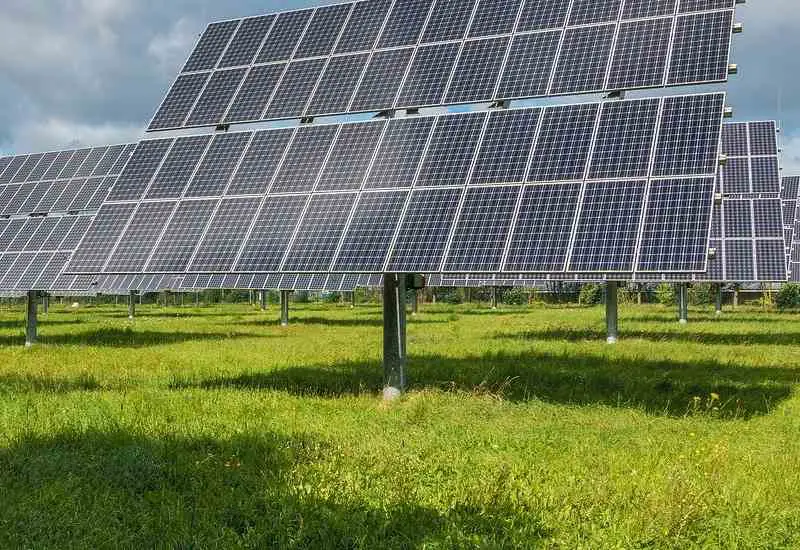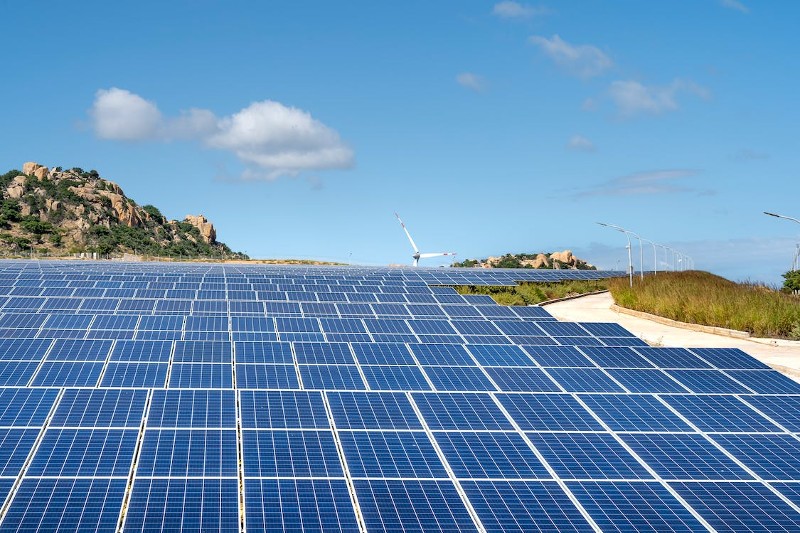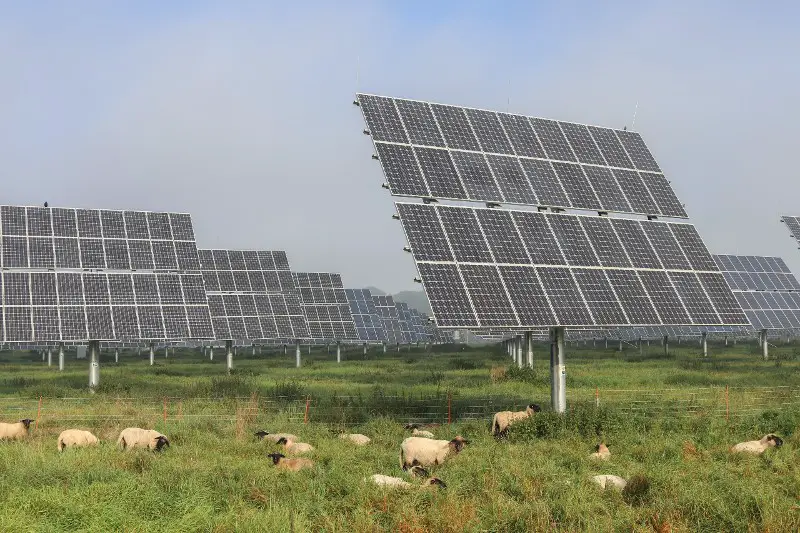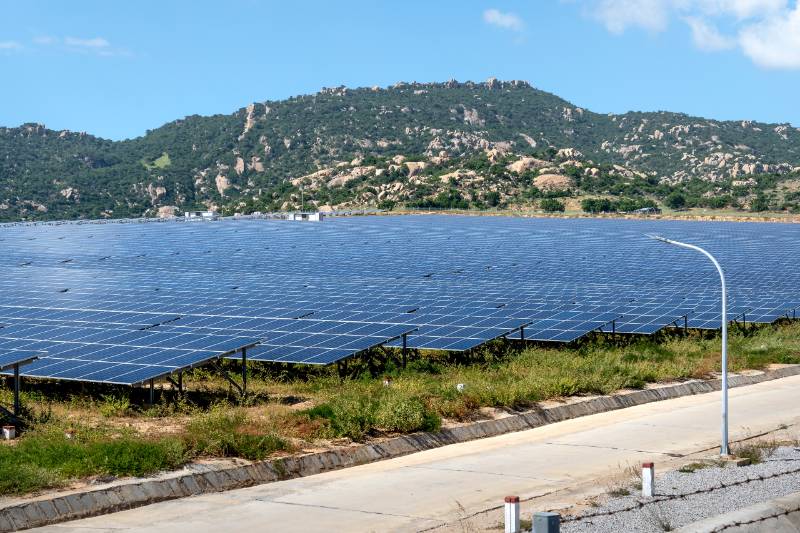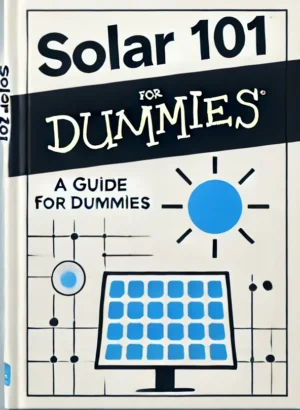Solar farms are not just good for the environment; they can also be a neat way to earn some extra cash.
But how much do solar farms pay to lease land?
Well, it varies quite a bit depending on how big the farm is and where it’s located.
Generally, you might get anything from $250 to $2,000 per acre each year.
In this article, I’ll walk you step by step through how to determine what solar farms pay for your land.
So, without further ado, let’s get started!
Key Takeaways
- Solar leasing allows landowners to rent their property to developers who install and manage solar farms.
- Leasing 25 acres at $1,000 per acre annually for a 5-megawatt solar farm can bring in $25,000 annually.
- Factors like market demand, alternative land uses, grid connection costs, and ease of construction affect lease rates.
- Strong demand from state renewable standards, corporate buyers, and tax incentives can increase lease rates.
- Contact a solar company for a professional assessment or use an online calculator to estimate your land’s value for solar leasing.
How Does Solar Leasing Work?
Solar leasing works by allowing landowners to rent their property to developers who install and manage solar farms.
This setup is a win for landowners because it provides them with a steady income without the need to manage or use the land themselves actively.
Let’s illustrate this more with an example.
Say a developer is looking to build a solar farm to generate about 5 Megawatts of electricity.
It’s common for each Megawatt of power to require about 5-10 acres, so this solar farm would need approximately 25 acres.
The rates for leasing land to solar farms can vary quite a bit, ranging from $250 to $2,000 per acre each year.
If a landowner decides to charge $1,000 per acre annually, leasing out 25 acres would bring in $25,000 per year.
Over a longer term, such as a 50-year lease, this setup could yield up to $1,250,000 for the landowner, representing a significant long-term return.
Of course, this is just an example and the lease payment still depends on many factors, like the size of the solar farm, location, type of land, etc.
However, this gives you a rough idea of how solar leasing works.
What Affects the Cost of the Lease?
1. Market Demand
The amount you can charge for leasing your land for a solar farm boils down to how much people want to build solar farms in your area.
If there’s a strong demand from investors, you’re likely to see higher lease rates.
So, what drives this demand?
Here are the top three factors:
- RPS (Renewable Portfolio Standard): This is a rule set by the state about how much renewable energy needs to be generated locally. For example, Virginia decided in February 2020 that by 2050, all the state’s electricity must come from renewable sources. This kind of law makes solar farms more desirable, pushing up the demand for land to build them on.
- The Presence of Corporate Buyers: Big companies like Facebook or Google, which run large data centers, also boost demand. They’re on the lookout for ways to cut down their carbon footprints, and one strategy is to source electricity from renewable resources like solar farms.
- Solar Farm Tax Incentives: Some states have incentives in place that give tax credits or rebates to developers who build solar farms. These incentives can increase the demand for solar farms and help drive up lease rates.
2. Alternative Uses of Your Land
The value of your land isn’t just about solar farming; it’s also about what else your land can do.
For instance, if your land is great for farming, that’s a bonus because you can make money off crops.
This gives you a basic idea of how much your land is worth—sort of like a starting point for pricing.
When you’re thinking about leasing your land for a solar farm, this “other use” value is super important.
It sets a baseline price.
If a developer knows they can make a certain amount by using the land differently, they’ll keep that in mind when they’re figuring out how much to pay you.
A smart developer will dig into what your land could be used for besides just a solar farm.
They’ll check out its farming potential, building options, or whatever else it might be good for.
Then, they’ll offer you a lease rate that makes sense compared to those other uses.
This way, you’ll have a good frame of reference for whether the solar lease offer is a good deal or not.
3. Cost of Interconnection
Solar developers have to factor in the cost of connecting the electricity from the solar farm to the power grid.
This involves getting the right permits and approvals, which can take a while and cost extra money.
So, any extra costs they face might affect how much they’re willing to pay you for leasing your land.
Now, if your land has certain perks, you might be able to ask for a higher lease rate.
Here are a few key benefits that can boost your land’s value:
- Transmission Line Access: If your land has a transmission or distribution line, then the developer can save a lot of money by tapping into this existing infrastructure.
- The Line Voltage: When the voltage matches the solar farm’s requirements, it simplifies the connection process. High-voltage lines involve higher interconnection costs due to the need for more extensive modifications or upgrades. So, if your land has high-voltage lines that are suitable for a solar farm, it could increase what you can charge.
- Sufficient Injection Point Capacity: A grid with a large capacity can handle more electricity, which is a plus. If your land is connected to a part of the grid with high capacity, developers might be willing to pay more because it reduces the need and cost for additional upgrades.
4. Amount of Land You Have
This is a tricky one.
On one side, having a big stretch of open land is super appealing to developers because they don’t have to deal with buildings or other obstacles.
On the other side, the regional area your land is in would dictate the size of solar farms that can be built.
Take, for instance, the southwestern states like California or Arizona.
Over there, it’s pretty common to find large areas of flat, usable land.
So, whether you’re setting up a huge 600-acre solar farm or a smaller 100-acre one, the cost per acre won’t vary much.
The land is plentiful and easy to work with.
Now, flip the scenario to southeastern states like Georgia or Alabama.
Here, it’s a different ball game.
Flat, open land isn’t as easy to come by.
So, if you’re planning a big 600-acre solar farm in these parts, you’re likely going to pay more per acre compared to setting up a smaller 100-acre farm.
It’s just harder to find large, suitable plots of land, which drives up the cost.
5. Other Supply and Demand Issues
Sometimes, solar lease rates can be greatly influenced by other supply and demand issues.
First off, if your state sets a new RPS target—that’s a goal for how much renewable energy the state wants to use.
So, what happens next?
Well, all the solar developers start hustling to grab land to meet these targets.
More competition among them means they might be willing to pay you more for your land to edge out their rivals.
Now, think about corporate buyers.
Let’s say a big company is struggling to get its Request for Proposal (RFP) approved.
They’re under pressure to boost their green credentials quickly.
Another situation could be a developer who already has projects in your area and needs more land to expand.
They might offer you a better deal than a newcomer who’s just starting because they’ve already invested in the region and want to keep building on that.
Tax incentives are another factor that can affect the lease rate you can get for your land.
If your state offers juicy tax breaks or rebates for solar energy projects, developers might be more eager to pay higher lease rates.
These incentives make the projects cheaper to run, so developers save money in the long run, making your land more valuable to them.
6. Ease of Construction
Last but not least, how easy it is to build on your land can affect how much you can charge for a lease.
Think about it: flat land with less than 5 degree-slope facing south, and free from trees, power poles, or other obstacles is perfect for setting up a solar farm.
If your land checks these boxes, it’s a lot more attractive to solar developers.
Another plus is if your land is right next to a road that’s accessible enough for construction crews to get in and out easily.
This kind of access can bump up the value of your land because it simplifies the logistics of building and maintaining a solar farm.
So, what should you do?
Take some time to look into the features of your land.
Understand the lay of the land, any potential obstacles, and how accessible it is.
Knowing these details will help you figure out how much your land is worth and how to negotiate the best lease rate possible.
What Are the Top States for Solar Leasing?
The top states for solar leasing are determined by the number of solar farms, lease rates, and available incentives.
Here’s a look at the top states for solar leasing:
| State | Number of Solar Farms | Lease Rate | Additional Information |
| California | 65,000 | – | Largest number of solar farms |
| Arizona | 60,000 | – | High concentration of solar farms |
| Colorado | 50,000 | – | A significant number of solar farms |
| New Jersey | 31,000 | – | A large number of solar installations |
| Massachusetts | 28,000 | – | Notable for solar farm development |
| Texas | – | $0.01/square foot | Most solar farms in 2014-2015 |
| Vermont | – | $2.50/square foot | High lease rates for solar land |
| Illinois | – | $1.75/square foot | Leader in commercial solar installations as of 2016 |
| Indiana | – | $1.20/square foot | Offers community choice option (CCO) for alternative renewable energy |
| Georgia | – | $0.10 per watt | Solar 20 program, offers CCO |
| Wisconsin | – | $2.50/square foot | High lease rates for solar land |
| Tennessee | – | $1.50/square foot | Offers community choice option (CCO) |
| Florida | – | $2.00/square foot | High lease rates for solar land |
| Utah | – | $2.50/square foot | High lease rates for solar land |
| Idaho | – | $0.50/square foot (or $1 per watt) | Lower lease rates, more affordable |
| Nevada | – | $1.00/square foot | Reasonable lease rates for solar land |
| Wyoming | – | $1.75/square foot | Moderate lease rates |
| North Carolina | – | $1.25/square foot | Moderate lease rates |
| Maryland | – | $0.00 | Offers free leasing |
| Ohio | – | $0.00 | Offers free leasing |
| Delaware | – | $21.20 per acre | Affordable leasing rates |
How Much Is Your Land Worth?
The best way to find out how much your land is worth for solar leasing is to talk to a solar company that knows its stuff.
They can check out your land and give you a good idea of the best lease rate you can get.
But before you do that, you can get a rough estimate using this online calculator.
This tool will give you a ballpark figure of what your land might be worth for solar leasing.
It’s a great way to have an idea of what to expect when you start talking to solar developers and negotiating your lease.
FAQs
How Much Does a Solar Farm Lease per Acre in Texas?
In Texas, solar farm leases between $0.01 to $0.03 per square foot per year, with incremental increases over 20-40 years and options for long-term renewals.
How Much Do Solar Farms Pay to Lease Land in NY?
In New York, solar farms pay between $1,000 and $4,000 per acre each year, depending on the location and land suitability.
How Much Does It Cost to Lease a Solar Farm per Acre in PA?
In Pennsylvania, the lease cost for solar farms ranges from $700 to $1,000 per acre annually, based on demand and land conditions.
How Much Do Solar Companies Pay to Lease Land in India?
In India, solar companies pay annual lease rates ranging from approximately ₹32,375 to ₹64,750 per acre, depending on the land’s value, with a 5% increase every two years over 26 years.
Conclusion
We’ve covered quite a bit in this article, from how to understand lease rates to figuring out what your land’s worth and even the costs involved in setting up a solar farm.
Before you jump into a lease agreement with a solar developer, really get to know your land’s details.
This means understanding its size, the soil quality, access to infrastructure, and even its sunlight exposure—these bits can majorly influence the lease rate you can negotiate.
Got more questions about solar leasing?
Don’t hesitate to drop them in the comments.
I’m here to help, and maybe share a few insider tips to make sure you’re getting the best deal possible!
Join our solar microdosing newsletter and get bite-sized, easy-to-understand insights into the world of solar energy.
From how solar panels work to building your own DIY solar system, we’ve got you covered.


